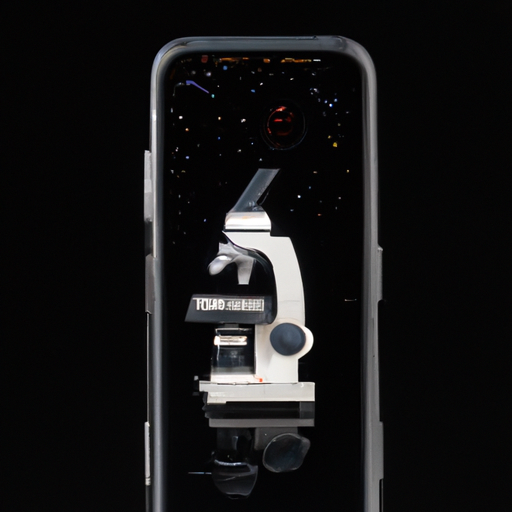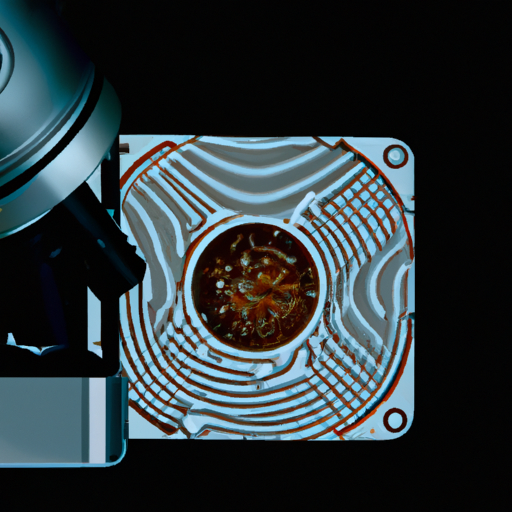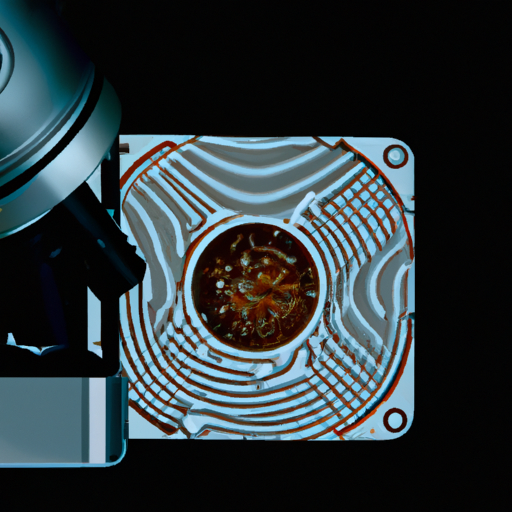Have you ever wondered how those tiny, intricate details on objects can be magnified and examined using just your smartphone? Well, it’s all thanks to the incredible technology behind the smartphone microscope. By simply attaching a small lens to your phone’s camera, this nifty invention allows you to explore a whole new world of microscopic wonders. In this article, we will take a closer look at the working of a smartphone microscope and discover how it enables us to uncover the hidden beauty that lies beyond the naked eye. So, get ready to embark on a journey of discovery as we unravel the mysteries of this fascinating device.

Overview of Smartphone Microscopes
Definition of a smartphone microscope
A smartphone microscope is a device that utilizes the camera and processing power of a smartphone to capture and analyze microscopic images. It is essentially a compact and portable microscope that can be easily attached to the camera lens of a smartphone.
Brief history of smartphone microscopes
The concept of smartphone microscopes emerged in the early 2000s as a result of advancements in mobile phone technology. The first smartphone microscope was developed by researchers at the University of California, Berkeley in 2011. Since then, various companies and researchers have contributed to the development of smartphone microscopes, improving their functionality, affordability, and image quality.
Components of a Smartphone Microscope
Camera
The primary component of a smartphone microscope is the built-in camera of the smartphone itself. The camera captures the image of the specimen, which is then processed and displayed on the smartphone screen.
Lens
A smartphone microscope incorporates a lens system that enhances the magnification capability of the camera. This lens system can vary in design and complexity, but its purpose is to allow the camera to capture clear and detailed microscopic images.
Illumination system
To properly visualize the specimen, smartphone microscopes are equipped with an illumination system. Typically, this involves built-in LED lights that illuminate the specimen, enabling the camera to capture a well-lit image.
Sample holder
To ensure stability and proper alignment of the specimen, smartphone microscopes include a sample holder. This holder securely holds the specimen in place, allowing for steady imaging and analysis.

Working Principle of Smartphone Microscopes
Capturing the image
When you place a specimen on the sample holder, the smartphone camera captures the image by focusing on the specimen through the lens system. The camera captures the light reflected or transmitted by the specimen.
Image processing
Once the image is captured, the smartphone’s processing power comes into play. The captured image is processed using image processing algorithms to enhance its quality, sharpness, and contrast. This processing improves the visibility of the specimen’s details.
Digital zoom
To further magnify the captured image, smartphone microscopes utilize digital zoom. Digital zoom is a software-based zooming technique that enlarges the image without physically moving the lens system. However, it’s important to note that digital zoom can result in a loss of image quality and resolution.
Displaying the image
The processed and zoomed-in image is then displayed on the smartphone screen in real-time. The high-resolution screen of smartphones allows for a clear and detailed visualization of the microscopic specimen. The image can also be saved, shared, or further analyzed using various apps and software.
Advantages of Smartphone Microscopes
Portability
One of the key advantages of smartphone microscopes is their portability. Unlike traditional microscopes, which can be bulky and require multiple components, smartphone microscopes are lightweight and compact. This makes them ideal for fieldwork and on-the-go analysis.
Affordability
Smartphone microscopes are significantly more affordable compared to traditional microscopes. Since they utilize the existing camera and processing capabilities of smartphones, the need for expensive additional components is eliminated. This affordability makes smartphone microscopes accessible to a wider range of users, including students and researchers with limited budgets.
Ease of use
Using a smartphone microscope is user-friendly and requires minimal technical expertise. The intuitive interface of smartphones, combined with the simplicity of attaching the microscope to the camera lens, makes it easy for anyone to quickly start capturing and analyzing microscopic images.

Applications of Smartphone Microscopes
Biological research
Smartphone microscopes have found extensive applications in biological research. They enable researchers to conveniently examine cells, tissues, and organisms in their natural environment. The portability of smartphone microscopes allows for on-site analysis, which is especially beneficial for field researchers.
Medical diagnosis
In the medical field, smartphone microscopes have proven to be valuable diagnostic tools. They facilitate the examination of bodily fluids, such as blood or urine, for the detection of pathogens or abnormalities. This portable and cost-effective solution has the potential to significantly improve access to medical diagnosis in remote areas.
Education and learning
Smartphone microscopes are being increasingly integrated into educational settings, enriching the learning experience of students. They provide an interactive and engaging way to explore the microscopic world. With the ability to capture and share images, smartphone microscopes encourage collaboration and facilitate discussions among students and teachers.
Limitations of Smartphone Microscopes
Limited magnification
While smartphone microscopes offer reasonably high magnification, they usually have limitations in comparison to traditional microscopes. The optical quality and design of the lens system in smartphone microscopes may hinder achieving extremely high magnification levels required for certain applications.
Lower resolution compared to traditional microscopes
Although smartphone cameras have improved significantly over the years, they still have lower resolution and image quality compared to dedicated scientific cameras used in traditional microscopes. This lower resolution can limit the level of detail and precision that can be observed and analyzed.

Recent Advancements in Smartphone Microscopes
High-resolution imaging
Advancements in smartphone camera technology have resulted in improvements in image resolution for smartphone microscopes. Higher megapixel cameras and enhanced sensor capabilities allow for sharper and more detailed microscopic images.
3D imaging
Recent developments in smartphone microscope attachments have enabled 3D imaging capabilities. By capturing multiple images from different angles and combining them, smartphone microscopes can create three-dimensional representations of specimens. This allows for a more immersive and comprehensive analysis.
Fluorescence imaging
Adding fluorescence capabilities to smartphone microscopes has opened up new possibilities in scientific research and diagnostics. By using fluorescent dyes or markers, smartphone microscopes can detect specific molecules or cellular structures with high sensitivity and specificity.
Comparison with Traditional Microscopes
Functionality
While smartphone microscopes offer convenience and portability, traditional microscopes excel in terms of overall functionality. Traditional microscopes have interchangeable objective lenses, allowing for a wide range of magnification options and specialized observation techniques.
Cost
Traditional microscopes can be quite expensive, especially when considering the various components and accessories required. In contrast, the affordability of smartphone microscopes makes them a cost-effective alternative, particularly for educational settings and resource-limited environments.
Usability
Traditional microscopes often require training and experience to operate effectively. Smartphone microscopes, on the other hand, are designed to be user-friendly and intuitive, allowing for quick and easy image capture and analysis.

Future Prospects of Smartphone Microscopes
Integration with AI and machine learning
The integration of smartphone microscopes with artificial intelligence (AI) and machine learning algorithms holds great potential. AI algorithms can analyze the captured images in real-time, assisting in the identification and classification of specimens. This can revolutionize various fields, such as environmental monitoring and disease diagnosis.
Enhanced imaging capabilities
Continued advancements in smartphone technology are expected to lead to further improvements in imaging capabilities. Higher resolution cameras, improved lens systems, and enhanced sensor technologies will enable smartphone microscopes to provide even more detailed and precise microscopic images.
Conclusion
Smartphone microscopes offer a portable, affordable, and user-friendly solution for capturing and analyzing microscopic images. With their growing applications in research, diagnosis, and education, smartphone microscopes are revolutionizing how we interact with the microscopic world. Although they have limitations compared to traditional microscopes, ongoing advancements and future prospects make smartphone microscopes a promising and accessible tool for scientific exploration and learning.




